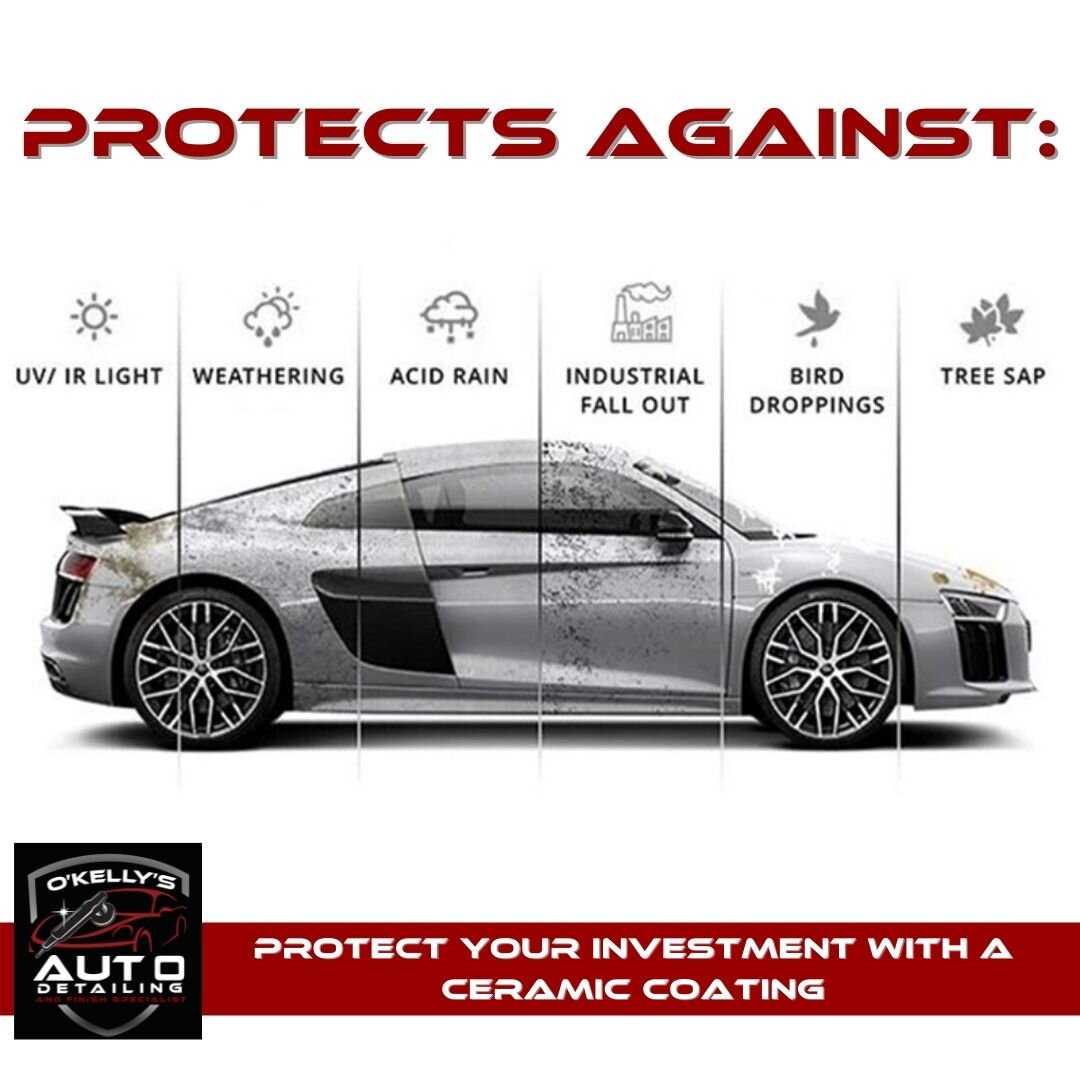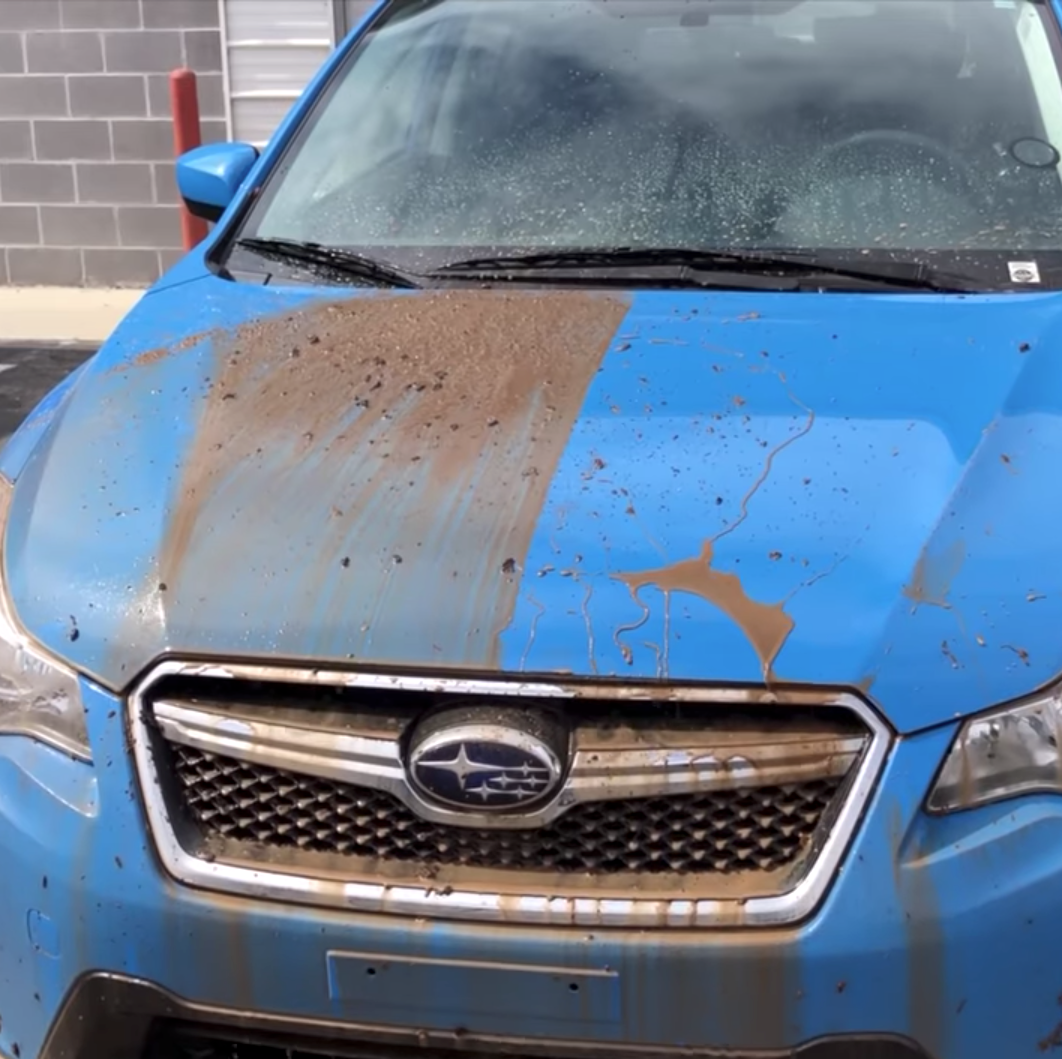10 Myths About Final Touch Auto Works Ceramic Coatings—Debunked!
10 Myths About Final Touch Auto Works Ceramic Coatings—Debunked!
Blog Article
The Ultimate Overview to Ceramic Coatings: Enhancing Your Automobile's Complete and Durability
Ceramic layers may be the service you have actually been browsing for if you're looking to raise your car's appearance and protection. These sophisticated coatings bond with your automobile's paint, creating a long lasting obstacle versus ecological damage. But exactly how do they compare to standard wax? Comprehending the benefits and application procedure can make a significant difference in your cars and truck treatment routine. Allow's discover what makes ceramic coatings a worthwhile financial investment for your vehicle.
What Are Ceramic Coatings?
Ceramic layers are sophisticated protective layers that improve your auto's exterior. They're made from a liquid polymer that chemically bonds with your lorry's paint, creating a long lasting shield. Unlike typical wax or sealants, which use off in time, ceramic finishings provide lasting defense against environmental impurities like UV rays, dust, and chemicals.When you apply a ceramic coating, you're spending in an obstacle that drives away water, making it simpler to clean your auto and maintaining it looking more recent for longer. This innovation helps preserve the stability of your paint, lowering the risk of scratches and oxidation.Ceramic finishings been available in different formulations, each designed to satisfy various requirements and preferences. You can pick a do it yourself set or select professional application, depending upon your convenience level and budget plan. Generally, ceramic coatings represent a sophisticated service for maintaining your car's visual allure and long life.
Benefits of Ceramic Coatings
You reveal a range of advantages that go past mere appearances when you spend in a ceramic finish. To begin with, it provides outstanding defense against ecological contaminants like dirt, bird droppings, and UV rays, keeping your cars and truck's paint looking new much longer. You'll notice that upkeep comes to be simpler, as the hydrophobic homes cause water and gunk to slide off effortlessly. This indicates much less time invested washing and describing your vehicle.Additionally, ceramic finishes can improve the gloss of your vehicle's finish, giving it that display room luster. They also offer resistance to scratches and swirl marks, which assists maintain your lorry's resale worth. With a ceramic covering, you're not just protecting your investment; you're additionally boosting its overall appearance and long life. Ultimately, this advanced technology guarantees your automobile attracts attention while enjoying long-lasting benefits that standard waxes simply can not match.
The Application Process: Just How to Use Ceramic Coatings
Applying a ceramic coating entails several key actions to assure optimal outcomes. Extensively wash your vehicle to eliminate any type of dirt, crud, or contaminants. This assures the surface is all set and clean for the finish. Next, sanitize the paint making use of a clay bar to eliminate embedded bits. Later, examine the paint for flaws and brighten it to accomplish a smooth surface.Once your automobile's surface area is prepped, use the ceramic finishing in small sections. Make use of an applicator pad to spread out the layer uniformly, complying with the supplier's guidelines. Allow the finishing to cure for the recommended time, usually in between one to two hours, depending upon the product.Finally, stay clear of washing your vehicle for at the very least a week to allow the coating bond effectively. Complying with these actions will help you accomplish a long lasting, high-gloss surface that protects your car for years to come.

Contrasting Ceramic Coatings to Typical Wax
After guaranteeing your auto's surface is perfectly prepped with a ceramic layer, it's time to consider exactly how this contemporary service compares to conventional wax. Ceramic layers offer a durable layer of security that lasts for many years, while wax generally offers only a couple of weeks of shine. You'll see that ceramic finishes bond with your paint, developing a hydrophobic surface area that drives away water and dirt, making maintenance easier.In comparison, typical wax rests on top of the paint and calls for constant reapplication. With ceramic finishings, you get premium scrape resistance and UV security, assisting to protect against fading and oxidation. While the initial financial investment for a ceramic layer is higher, the long-term advantages commonly outweigh the costs. If you're looking for resilience and improved gloss, ceramic coverings are a smart option over traditional wax.
Upkeep Tips for Your Ceramic Layered Vehicle
To keep your ceramic-coated automobile looking excellent, normal upkeep is essential. Begin with a mild wash using a pH-balanced shampoo; prevent extreme cleaning agents that can deteriorate the finishing. Use a microfiber wash glove to avoid scrapes and always wash extensively to eliminate any kind of soap residue.After cleaning, dry your auto with a soft microfiber towel to prevent water areas. Think about applying a ceramic maintenance spray every couple of months to boost the finish's hydrophobic properties and include an added layer of protection.It's likewise smart to avoid automated cars and truck cleans with unpleasant brushes, as they can damage the finishing. Instead, go with hand washes or touchless wash choices. Additionally, frequently inspect your lorry for contaminants like tree sap or bird droppings and resolve them quickly to stop etching. Complying with these suggestions will aid keep the luster and sturdiness of your ceramic-coated lorry for years to come.
Common Myths Concerning Ceramic Coatings
Despite the remarkable benefits of ceramic finishes, several myths can develop complication for car owners. One usual misconception is that ceramic coverings remove the requirement for maintenance. While they do provide boosted protection, routine cleaning and treatment are still important to keep that high-gloss finish.Another myth is that these finishes are scratch-proof. While they offer a solid layer of protection versus small scrapes, they can not withstand severe effects or abrasive materials.Many additionally believe that ceramic finishings will certainly make their autos immune to all impurities. In truth, they drive away dust and water but will not protect against concerns like bird droppings or tree sap from causing damage if left unattended.Lastly, some think that using ceramic coatings is a DIY task anyone can manage, yet attaining a remarkable application typically requires professional expertise to ensure peak results.
Selecting the Right Porcelain Covering for Your Cars and truck
Exactly how do you choose the appropriate ceramic coating for your vehicle? Begin by thinking about the level of protection you require. If your auto faces harsh weather condition or regular trip, decide for a premium layer that offers superior toughness and resistance to scrapes, UV rays, and chemical stains.Next, consider the application method. Some layers call for professional installation, while others are DIY-friendly. If you're experienced, a do it yourself item may conserve you cash, yet for the very best results, a specialist can assure correct application.Don' t fail to remember to check the longevity of the layer. Some last a couple of years, while others can secure for a decade or even more. Finally, check out endorsements and reviews why not find out more to evaluate customer contentment. By weighing these factors, you'll locate a ceramic covering that not just boosts your cars and truck's appearance yet also provides durable defense.
Often Asked Questions
Exactly How Long Do Ceramic Coatings Last usually?
Ceramic finishings generally last anywhere from two to 5 years, relying on variables like application, upkeep, and environmental conditions. You'll wish to comply with proper care regimens to maximize their durability and efficiency.
Can Ceramic Coatings Be Applied Over Paint Scratches?
You can't use ceramic coverings over paint scratches properly. It's ideal to fix any scrapes initially, ensuring a smooth surface area - Final Touch Auto Works Ceramic Coatings. By doing this, the covering bonds correctly and provides suitable security for your vehicle's finish
Are Ceramic Coatings Safe for All Automobile Surfaces?
Ceramic coatings are generally secure for most car surfaces, including paint, glass, and wheels. However, it is you can look here important to check particular product guidelines, as some layers could not be suitable for certain materials or surfaces.

Will Porcelain Coatings Protect Against UV Damages?

Can I Do Touch-Ups on Ceramic Coated Surfaces?
You can do touch-ups on ceramic covered surface areas, yet it's important to utilize compatible products. Confirm the area is clean and comply with appropriate application techniques to keep the covering's integrity and performance. Unlike conventional wax or sealers, which put on off over time, ceramic coatings give resilient security versus environmental contaminants like UV rays, dust, and chemicals.When you apply a ceramic finish, you're spending in a barrier that drives away water, making it less complicated to clean your car and keeping it looking more recent for longer (Final Touch Auto Works Ceramic Coatings). Afterward, examine the paint for blemishes and polish it to accomplish a smooth surface.Once your car's surface area is prepped, use the ceramic finishing in tiny sections. Enable the covering to heal for the advised time, commonly in between one to two hours, depending on the product.Finally, stay clear of cleaning your auto for at least a week to allow the finish bond correctly. Consider using a ceramic upkeep spray every few months to improve the finish's hydrophobic buildings and add an added layer of protection.It's additionally sensible to prevent automatic car cleans with unpleasant brushes, as they can harm the finish. Ceramic coverings are click here now normally safe for the majority of automobile surface areas, including paint, glass, and wheels
Report this page